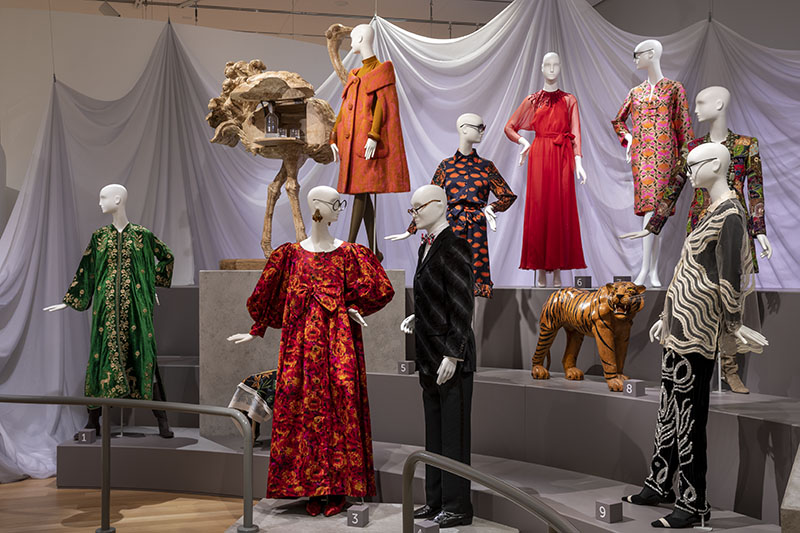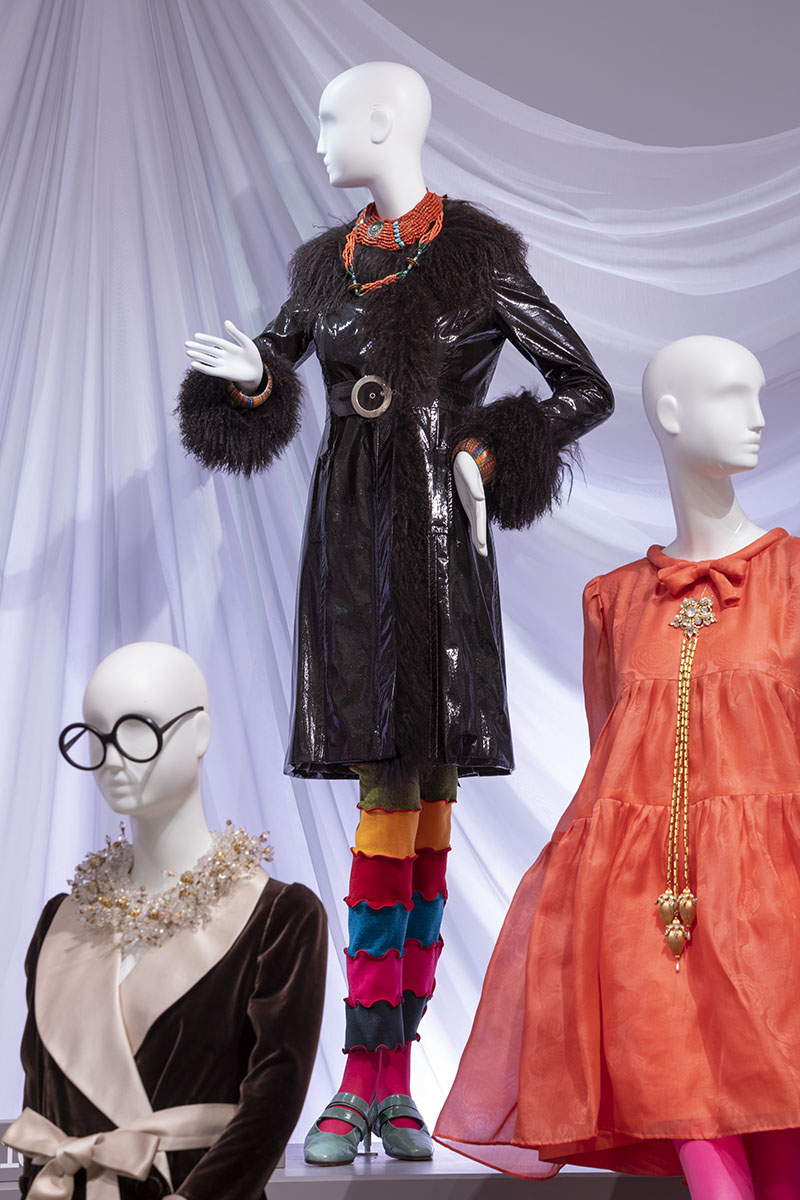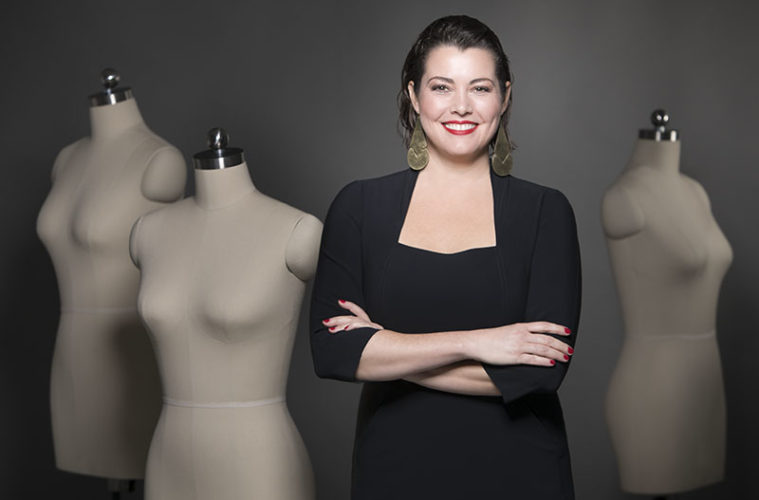Fashion and design permeate every aspect of our lives, from the clothes we select each day to the colorful food packaging in our local grocery stores. “Humans have an impulse to create and regardless of culture, of time period, or even materials, there is something unifying in the way in which we express ourselves through fashion and design,” says Petra Slinkard, the Nancy B. Putnam Curator of Fashion and Textiles and Director of Curatorial Affairs at the Peabody Essex Museum.
Slinkard was hired in February 2018 to mastermind the contents of Fashion and Design, a 5,000-square-foot space in the museum’s new wing that opened in September 2019. “My job was to get to know the collection and figure out how to display it,” she says, noting the enormity of the task. The museum’s shoe collection alone exceeds more than 4,000 pairs.

After more than a year’s work, Slinkard and the exhibition team settled on an open and flexible design for the gallery, which consists of 10 niches curving around a central platform designated to display ensembles from the museum’s fashion collection. Each alcove explores different themes related to the ways people design for their bodies, environment, society, and the world. Objects can change within each pod, or its focus can change entirely.
“So, this section is about how fashion and design can define or confine us,” says Slinkard, standing in front of a niche containing several items, including a bustle and modern Japanese dress stuffed with pillows at the waist, hips, and elsewhere. “It’s looking at body modification and the ways we have adapted over the years.” Several mirrors offer the viewer a moment of reflection by asking, “How did you style yourself today?”
A nearby nook holds modern and historical furniture, noting how fashion, textiles, and design can support us in different ways. Another alcove examines how fashion can transport us and includes a retro-looking turquoise bicycle near a display of some of the museum’s shoes. Then there is the Carl and Iris Apfel section showing how fashion can be your life. The niche showcases 15 of Iris’s outfits and three of her late husband’s; the gallery will regularly swap out the ensembles to protect them and keep the section fresh.

The themes Slinkard has chosen make us pause and think more deeply about the nature of fashion and design. To explore its imaginative aspect, a pod displays quirky glass and wood objects, such as a vase made from comic books. To examine its intricacy, a section presents several elaborately stitched quilts and a carved, wooden Chinese moon bed crafted for the 1876 World’s Fair without using a single nail. Further on, we see how fashion and design can empower and intimidate in an area exhibiting a military uniform from 1812 and samurai warrior dress.
The gallery isn’t timid about tackling tough questions, either. For the alcove investigating how fashion can be appreciated or appropriated, a large example of Samoan barkcloth from the late 1800s hangs on the wall next to a mannequin wearing a 1930s women’s dress and bolero jacket from Hawaii employing the same barkcloth design. “So, the question is,” says Slinkard, “where do you draw the line between inspiration and theft?”
On the central platform, Slinkard has grouped the mannequin’s outfits by color. In the yellow area, a golden designer ballgown stands next to a plain, yellow, Red Cross volunteer dress. “It absolutely holds its own,” says Slinkard referring to the uniform. “It reinforces this idea that there is beauty in everyday objects, and they don’t have to be couture to have value intellectually and aesthetically.” The open design of this two-tiered platform makes it easy to swap out garments, as well as change the platform’s focus.
“We just acquired a collection from Yolanda Celluci,” says Slinkard, referring to the Newton-based wedding dress designer. “The plan is to eventually change out this entire platform to showcase examples from Yolanda’s collection. We’ll be highlighting a local entrepreneur, who was all glitz and glam, while still focusing on the theme of fashion and design.”
As Slinkard thinks about the gallery’s evolution, she wants to be both reactive and proactive. “Being an observer of what is happening across our country and the world, I’ll try to let that drive the themes that we explore,” she says, adding that sustainability, ubiquity, and technology are three she’d like to investigate. She also notes that the collection has a lot to share with her in terms of future topics to explore.
“One of my goals, particularly with fashion,” continues Slinkard, “is to have people walk away from an experience that we’ve created thinking differently not only about themselves but clothing, textiles, and design both historical and contemporary. In fact, my target market is the individual who comes in and says, ‘I hate fashion. This isn’t art and I don’t want anything to do with this.’ But when they leave an exhibit we’ve created, they say, ‘Okay, I hadn’t thought about it in that way.’”
Peabody Essex Museum, 161 Essex St., Salem, 978-745-9500, pem.org

